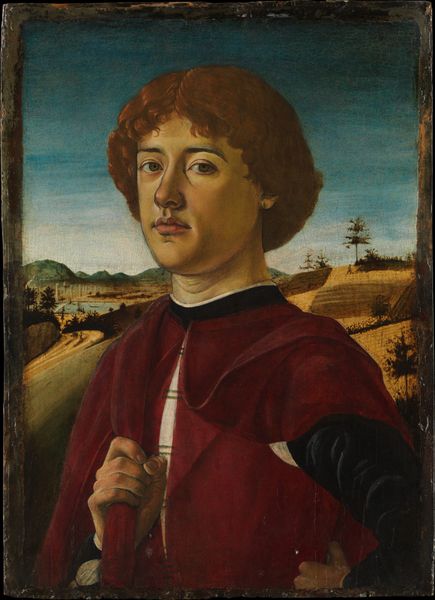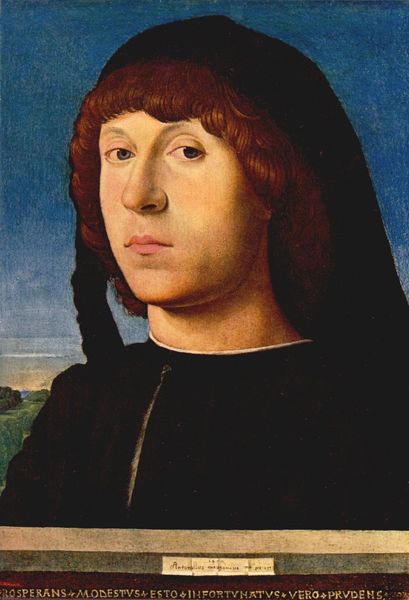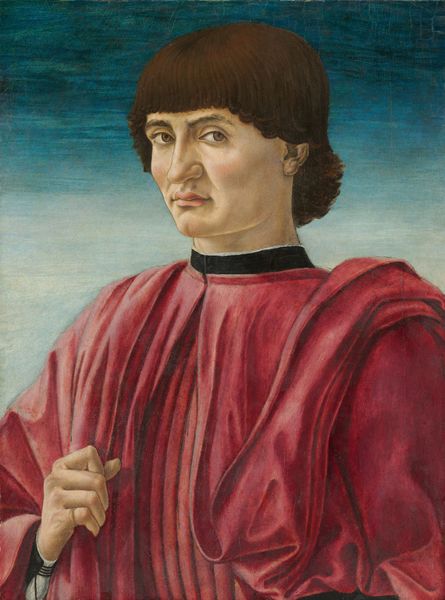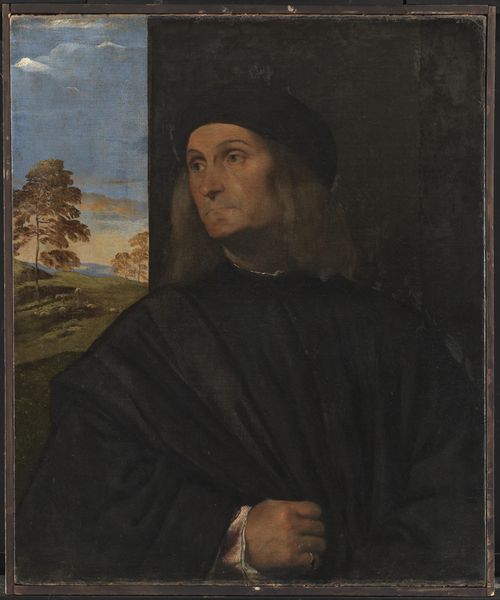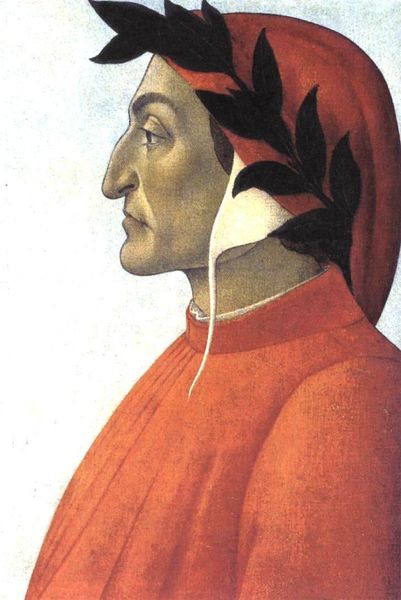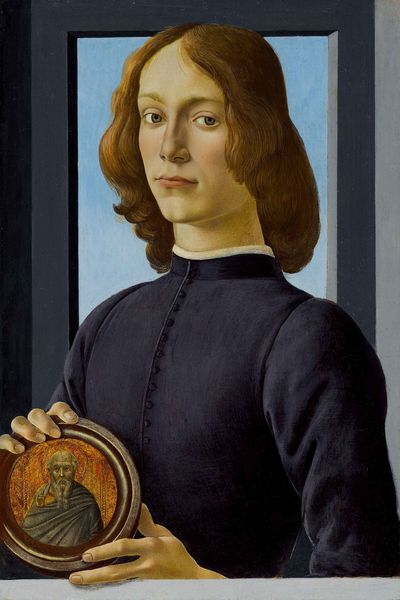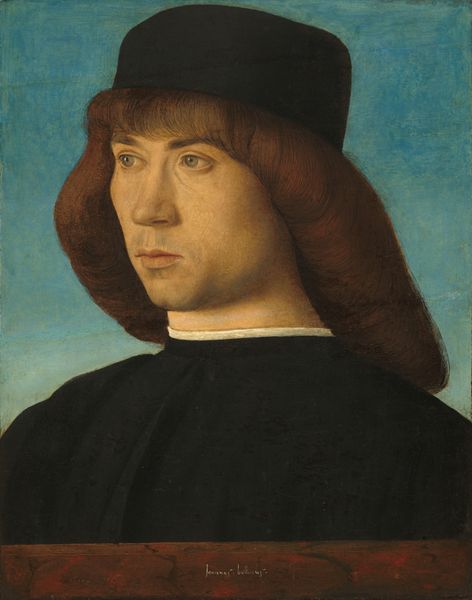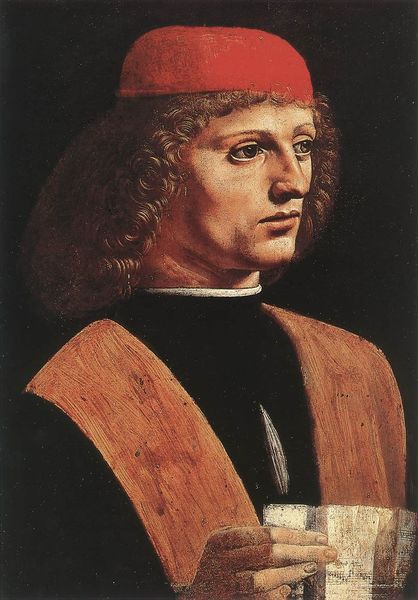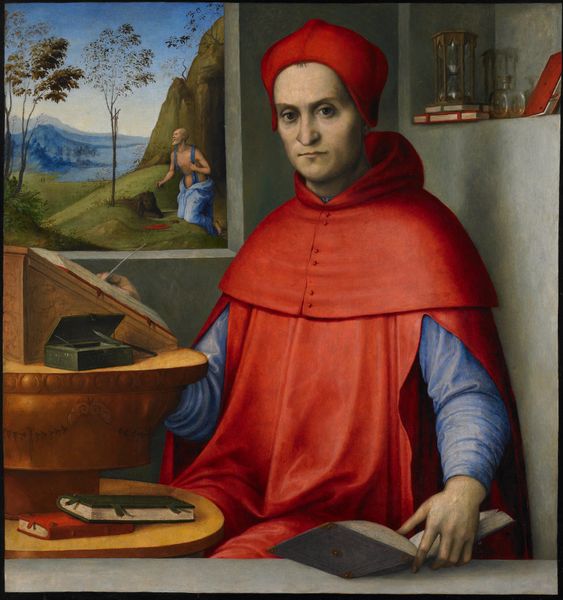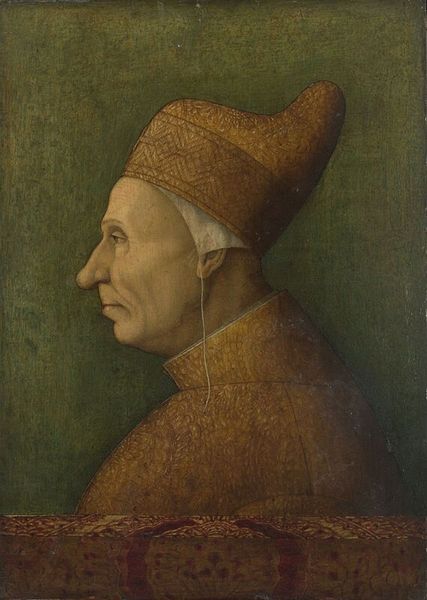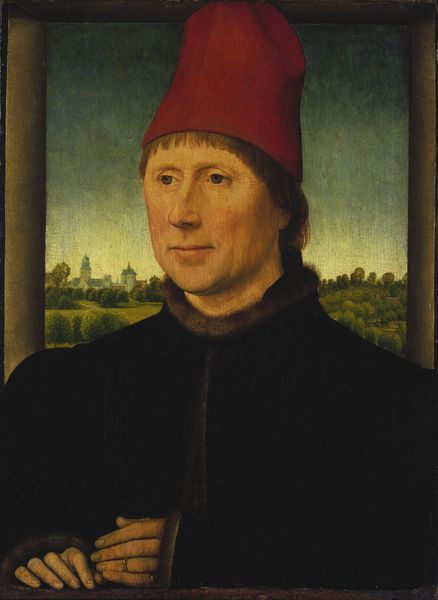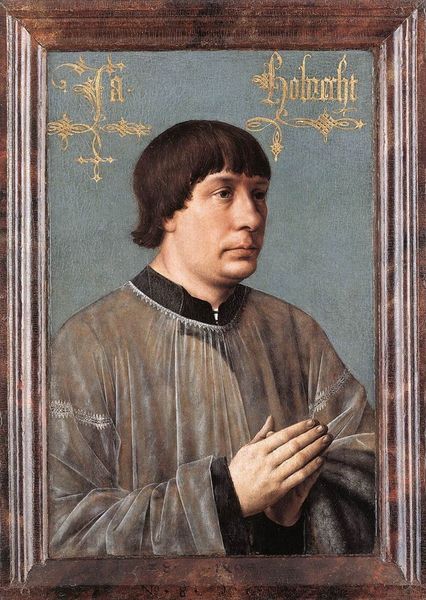
painting, oil-paint
#
portrait
#
painting
#
oil-paint
#
mannerism
#
oil painting
#
history-painting
#
italian-renaissance
#
portrait art
#
fine art portrait
Copyright: Public domain
Curator: Let’s consider this "Portrait of a Man," a painting attributed to Francesco del Cossa, an Italian Renaissance artist. What strikes you initially? Editor: It’s a study in subtle details. Look at the man's expression – calm, yet with a hint of self-awareness. And then, the materiality of that dark robe against the meticulously rendered skin… it suggests luxury and labor, doesn't it? Curator: Absolutely. Portraits like this were crucial displays of status for wealthy patrons, reflecting the power dynamics of the time. Note how the ring becomes almost a focal point. Editor: The gold practically gleams against his fingers. It represents a direct, tangible display of wealth, signaling craft and commerce. One wonders about its maker and the process… Did Cossa choose the pose specifically to feature the ring, elevating its symbolic value? Curator: It’s quite probable. Del Cossa's involvement in civic projects such as the Hall of Months indicates his awareness of public image. Placing emphasis on wealth was an overt advertisement. The carefully constructed background adds a layer too, referencing ideal landscapes—a nod to the sitter’s refined taste, or perhaps even his travels. Editor: That background seems oddly…artificial, almost staged, as a deliberate artifice, enhancing the sense of the man's deliberate self-presentation. Look how thin and precise the strokes must have been! It speaks to immense labor and therefore investment from both artist and client. Curator: And consider the intended audience – displayed in a private residence, this work reinforced social hierarchies. Think of the conversations this portrait sparked, reinforcing the patron's position. It also raises questions about the public function of portraits. What were they really intended for? Editor: It makes me think of the economic exchanges that made a work like this possible: the mining of pigments, the workshops involved in prepping the wood panel, even the tailoring of the sitter’s garment. All are linked into that gold ring held prominently as the linchpin. A reminder of material and political realities of the Renaissance. Curator: Viewing the Portrait is a layered experience, then, from discerning identity to understanding art's public role. Editor: It serves to deepen our respect for artistry and craft in building this narrative, all while we consider labor, worth, and context of the Italian Renaissance.
Comments
No comments
Be the first to comment and join the conversation on the ultimate creative platform.

